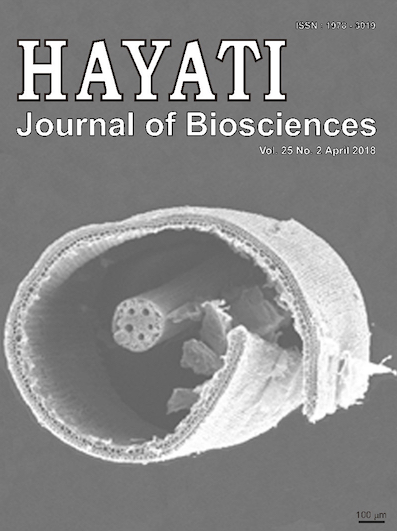Biodiversity of Bali Banana (Musaceae) and its Usefulness
Abstract
Banana (Musa spp.) is one the most important agriculture commodities in Indonesia. Archeological and molecular evidences suggest that speciation of this herb occurred in Indonesia, leading to the high diversity in the archipelago. In Bali Island, banana is not only sought for food but as well as for their symbolic role in religious and cultural ceremonies. However, the high demand for bananas in Bali is not yet supported by the adequate production of local farms. This presented study aimed to investigate the diversity of banana cultivars or sub-species in Bali and its usefulness to determine preferable cultivars to cultivate. We recorded and characterized 43 banana cultivars in 10 villages that represent the 8 regencies and 1 city of Bali province. Out of the 43 cultivars, 7 were highly used and at least one cultivar was discovered in each of the studied village. The presence of these cultivars in the study areas were confirmed by site visit and characterization of the fruits. Among the highly ranked cultivars or species, only biu kayu is unique to Bali as it was not found in the closest provinces of East Java and Madura. Hence, the results suggested that to improve the cultivation and production of these 7 highly used cultivars could be an appropriate solution to meet Bali demand of bananas. Furthermore, cultivating biu kayu would also help conservation effort since this cultivar is also currently listed as a rare genetic resource.Downloads
HAYATI J Biosci is an open access journal and the article's license is CC-BY-NC. This license lets others distribute, remix, tweak, and build upon author's work, as long as they credit the original creation. Authors retain copyright and grant the journal/publisher non exclusive publishing rights with the work simultaneously licensed under a https://creativecommons.org/


















.png) IPB University
IPB University Department of Biology
Department of Biology The Indonesian Biological Society
The Indonesian Biological Society 

